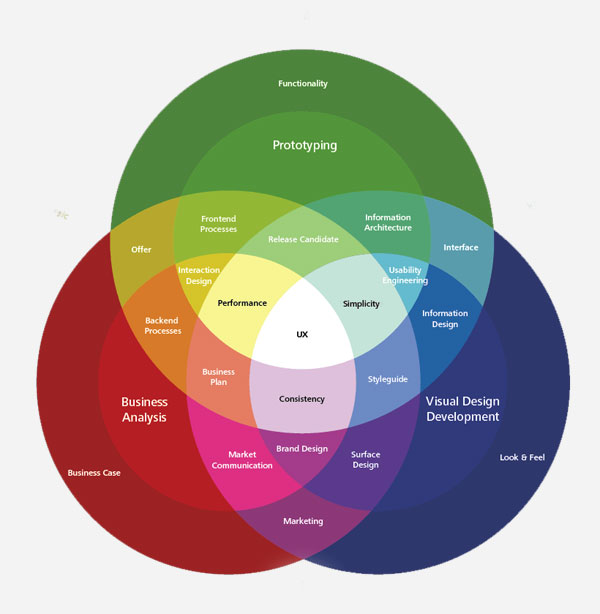A blanket term for all factors which influence the users perception of a product or a service.
User experience is often abbreviated to UX, and is also known as ‘experience design’.
When interacting with any system, there are many qualities which affect the emotional response of the user. Aesthetics, responsiveness, familiarity and usability are just some of the elements which contribute to the experience, and the whole can be loosely described as the ‘feel’ of ‘look and feel’. With such varied factors to consider, evaluation of user experience is examination of the work of many disciplines: graphic design, user interface design, copywriting, information architecture and so on.
User experience design as a profession is thought of by some as a directorial role, where professionals in many disciplines are led in the creation of a product. At the very least it can be said that user experience design is an inter-disciplinary role which calls for knowledge and practical ability in multiple areas, such as interaction design, psychology and research.
It is important to note that user experience is not the same as usability or user interface design. The former is a measure of the ease-of-use of a system. The latter is one factor of many which comprise the total user experience.

